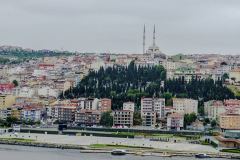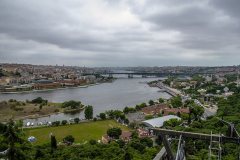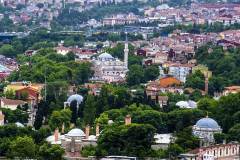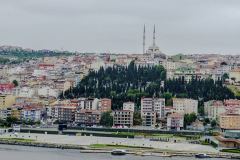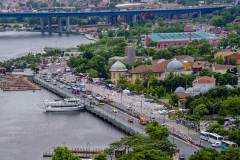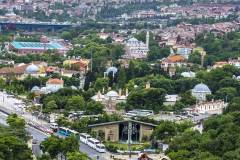Camlica Hill is one of the highest hills in Istanbul, Turkey, and it offers panoramic views of the city’s European and Asian sides. Located on the Asian side of Istanbul, Camlica Hill is a popular destination for locals and tourists alike, and it has been a beloved spot for centuries.
The hill is home to two peaks, the Big Camlica and the Small Camlica, and it is covered with a lush forest of pine, cypress, and oak trees. The summit of the hill is a perfect place to relax and enjoy the breathtaking views of the Bosphorus and the city of Istanbul, especially during sunrise or sunset.
There are several parks and gardens on the hill, including the Camlica Park, which features walking paths, fountains, and picnic areas. Visitors can also explore the historic Camlica Mosque, which was built in the Ottoman style and is one of the largest mosques in Istanbul.
In addition to its natural beauty and historic landmarks, Camlica Hill is also known for its cultural significance. It has been a gathering place for poets, artists, and intellectuals throughout Istanbul’s history, and it is often used as a venue for cultural events and festivals.
Overall, Camlica Hill is a must-visit destination for anyone traveling to Istanbul, as it offers a unique perspective on the city and its history, as well as a chance to enjoy its natural beauty and cultural richness.
The Golden Horn is a famous body of water in Istanbul, Turkey, and it has been celebrated by many writers and poets throughout history. One of the most famous works about the Golden Horn is “Aziyade” by Pierre Loti, a French novelist and naval officer who visited Istanbul in the late 19th century.
Loti’s book “Aziyade” is a semi-autobiographical novel about his experiences in Istanbul, and it includes vivid descriptions of the Golden Horn. In the book, Loti describes the Golden Horn as a place of beauty and tranquility, a natural harbor where ships from all over the world come to anchor. He writes about the shimmering waters of the Golden Horn, the graceful mosques and minarets that line its shores, and the bustling markets and neighborhoods that surround it.
Loti also writes about the people who live and work on the Golden Horn, from the fishermen who cast their nets in its waters to the merchants who sell their wares in its bazaars. He describes the colorful characters he meets, from the young woman named Aziyade who becomes his lover to the eccentric old man who lives in a houseboat on the Golden Horn.
Through Loti’s descriptions, the Golden Horn comes to life as a place of contrasts and contradictions, a mix of ancient and modern, East and West, tradition and innovation. It is a place where the past and the present are intertwined, where history and myth blend together, and where the beauty of nature and the creativity of humanity combine to create something truly unique and unforgettable.
Our first full day tour included visit to Pierre Loti where we took the cable car to go all the way up to one of the highest hill in the European side of Istanbul. It was one of the most a mazing views that exceeded any other view from the other hills that we visited.
As I mention in one of the pervious blog, Istanbul is known as the City on the Seven Hills. I made sure that I have to visit all of them to get the best photo opportunity for the city. Each one of these hills special view to a specific area. Pierre Loti has the most panoramic view for the golden Horn and Bosphorus area.





